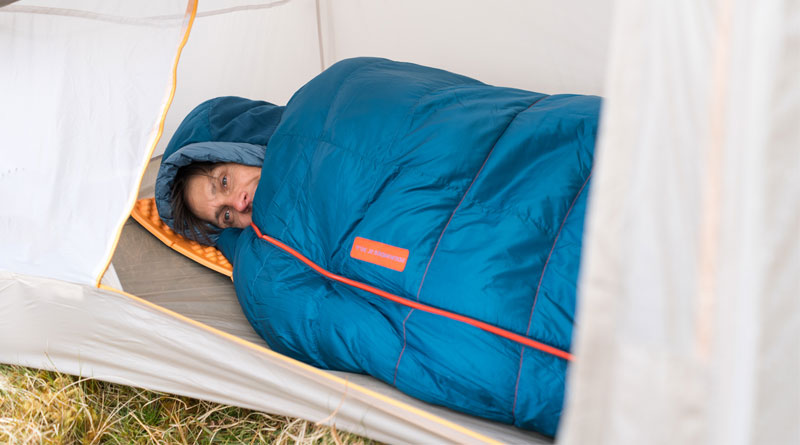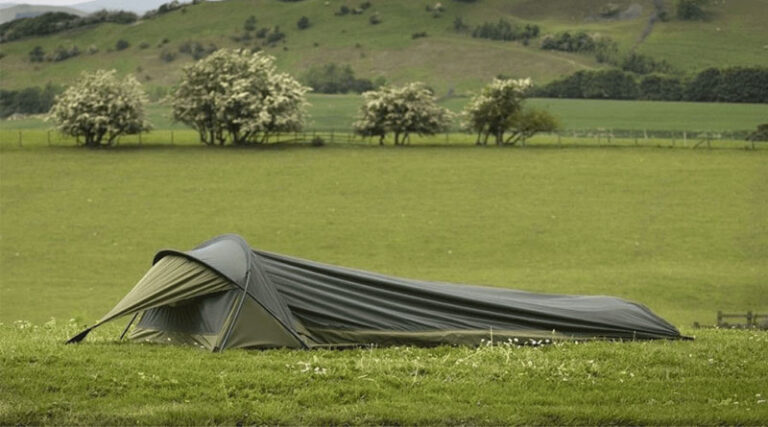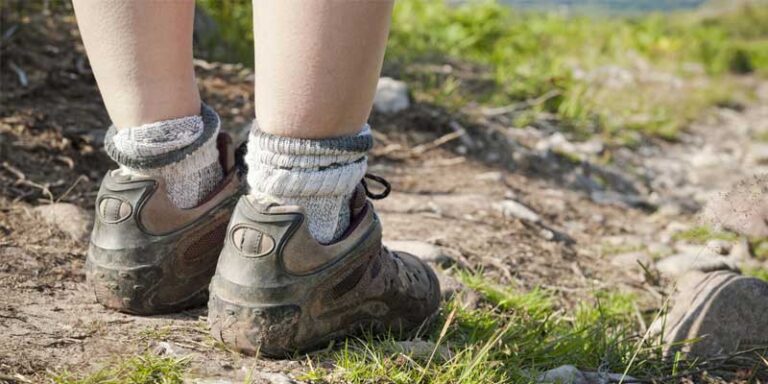Finding the right sleeping bag is important. Many bags feel tight or uncomfortable when you shift positions at night. A good sleeping bag should give enough space for your knees and shoulders. It should also keep you warm without feeling restrictive. Some models have extra room or special shapes for better comfort. The right insulation helps you stay warm in cold weather. Lightweight materials make it easier to carry while camping or backpacking. In this guide, we review the best sleeping bags for side sleepers. We focus on comfort, warmth, weight, and design. Whether camping or backpacking, you’ll find a great option here.
1. NEMO Disco Endless Promise

- Temperature Rating: 15°F
- Insulation: 650-fill-power, hydrophobic, PFC-free duck down
- Weight: 2 lbs 11 oz (Regular)
- Packed Size: 8.5 x 11.5 in
The NEMO Disco 15 Endless Promise continues the brand’s tradition of comfortable, side-sleeper-friendly sleeping bags while incorporating a more sustainable approach with recycled materials. Featuring the classic spoon shape, this bag offers extra room around the knees and elbows, making it ideal for those who toss and turn at night. The Thermo Gills™ allow for temperature regulation without unzipping, and the Blanket Fold™ draft collar adds an extra layer of warmth and comfort.
Though it packs in plenty of warmth and coziness, the Disco 15 is a bit on the heavier side compared to similar bags. Its packed size is also larger, making it less ideal for ultralight backpackers. However, if comfort and sustainability are high on your priority list, this bag is a great choice for three-season adventures.
Pros:
- Spacious spoon shape
- Made with recycled materials for sustainability
- Effective Thermo Gills™ for ventilation
- Blanket Fold™ collar adds warmth and comfort
Cons:
- Bulkier and heavier than some 15°F bags
- Not ideal for ultralight backpacking
See the NEMO Disco See the Women’s NEMO Disco
2. Big Agnes Sidewinder SL

- Temperature Rating: 20°F
- Insulation: 650-fill DownTek™ water-repellent down
- Weight: 2 lbs 4 oz (Regular)
- Packed Size: 8 x 17.5 in
The Big Agnes Sidewinder SL is designed specifically for side sleepers, featuring a unique pattern that allows for a more natural sleeping position. The bag’s insulation is responsibly sourced DownTek™ down, which provides excellent warmth while resisting moisture. The design incorporates a stretchy hood and an integrated pillow pocket for added comfort.
While the Sidewinder SL excels in comfort for side sleepers, it does have some limitations. The zipper tends to snag more than expected, and the footbox can feel a bit restrictive for those with larger feet. Additionally, while the down insulation is treated for water resistance, synthetic alternatives might perform better in truly wet conditions.
Pros:
- Excellent design
- Lightweight and packable
- DownTek™ insulation resists moisture
- Integrated pillow pocket adds comfort
Cons:
- Zipper snags more often than expected
- Footbox may feel tight for some users
See the Big Agnes Sidewinder SL See the Women’s Sidewinder SL
3. NEMO Tempo

- Temperature Rating: 20°F
- Insulation: Synthetic Stratofiber™
- Weight: 3 lbs 10 oz (Regular)
- Packed Size: 9 x 14 in
The NEMO Tempo 20 is a great option for campers who prioritize comfort over ultralight performance. Featuring the brand’s signature spoon shape, it provides extra room for movement, making it a great choice for side sleepers. The synthetic Stratofiber™ insulation performs well in damp conditions and maintains warmth even when wet. Additional features like the Blanket Fold™ collar and integrated pillow pocket enhance overall coziness.
However, the Tempo 20 is not the lightest or most compact sleeping bag in its class. It leans more toward car camping than backpacking due to its bulkier packed size and heavier weight. If you value comfort over weight savings, though, this is a solid three-season choice.
Pros:
- Spacious design
- Synthetic insulation works well in damp conditions
- Blanket Fold™ collar adds warmth and comfort
- Durable materials for longevity
Cons:
- Heavier and bulkier than many 20°F bags
- Not ideal for ultralight backpacking
See the NEMO Tempo See the Women’s NEMO Tempo
4. REI Co-op Siesta

- Temperature Rating: 20°F
- Insulation: Synthetic polyester
- Weight: 5 lbs 7.3 oz (Medium)
- Packed Size: 11 x 16 in
The REI Co-op Siesta is a roomy, rectangular sleeping bag designed for comfort-oriented camping. Its synthetic insulation provides reliable warmth in damp conditions, making it a good option for casual campers who need versatility. The full-length zipper allows it to double as a blanket, and the soft interior lining enhances its coziness.
However, due to its bulk and weight, the Siesta is not suitable for backpacking. It is best suited for car camping or situations where weight and pack size are not major concerns. If you prioritize comfort and affordability over portability, this is a great value sleeping bag.
Pros:
- Spacious and comfortable rectangular design
- Affordable price point
- Full-length zipper allows it to function as a blanket
- Durable synthetic insulation
Cons:
- Too heavy and bulky for backpacking
- Less thermally efficient than mummy-style bags
5. NEMO Forte Endless Promise

- Temperature Rating: 20°F
- Insulation: Recycled synthetic PrimaLoft® RISE
- Weight: 3 lbs 7 oz (Regular)
- Packed Size: 11.5 x 9 in
The NEMO Forte 20 Endless Promise is a sustainable take on the brand’s classic Forte series, featuring recycled PrimaLoft® RISE insulation. This spoon-shaped bag is tailored for side sleepers and features Thermo Gills™ for ventilation and a Blanket Fold™ draft collar for extra warmth. The insulation performs well in damp conditions, making it a reliable choice for three-season use.
Though it’s relatively lightweight, it still leans toward the bulkier side for backpacking. While the sustainability aspects are a bonus, some users may prefer down insulation for a better warmth-to-weight ratio.
Pros:
- Sustainable materials without sacrificing performance
- Spacious design
- Thermo Gills™ for effective ventilation
- Comfortable and warm for three-season camping
Cons:
- Bulkier than down alternatives
- Not ideal for ultralight backpackers
See the NEMO Forte See the Women’s NEMO Forte
6. Kelty Cosmic 20 Down

- Temperature Rating: 20°F
- Insulation: 550-fill power down
- Weight: 2 lbs 7 oz (Regular)
- Packed Size: 8 x 13 in
The Kelty Cosmic 20 Down is a budget-friendly down sleeping bag that offers solid warmth and compressibility for its price. With a 550-fill down insulation, it provides decent warmth while remaining relatively lightweight. The draft collar and full-length zipper help keep heat in, making it a great choice for three-season backpacking.
While the Cosmic 20 offers good value, the 550-fill power down isn’t as warm or compressible as higher-fill alternatives. Additionally, the zipper can be finicky, and the fit is a bit snug for larger users. However, for the price, it remains one of the best entry-level down sleeping bags available.
Pros:
- Affordable down sleeping bag
- Lightweight and packable
- Good warmth for three-season use
- Draft collar helps retain heat
Cons:
- Lower fill power means less warmth-to-weight efficiency
- Zipper can be finicky
Sleeping Bags for Side Sleepers: Summary
| BAG | TEMP RATING | INSULATION | WEIGHT | PACKED SIZE |
|---|---|---|---|---|
| NEMO Disco Endless Promise | 15°F | 650-fill-power | 2 lbs 11 oz | 8.5 x 11.5 |
| Big Agnes Sidewinder SL | 20°F | 650-fill DownTek | 2 lbs 4 oz | 8 x 17.5 in |
| NEMO Tempo | 20°F | Synthetic Stratofiber™ | 3 lbs 10 oz | 9 x 14 in |
| REI Co-op Siesta | 20°F | Synthetic polyester | 5 lbs 7.3 oz | 11 x 16 in |
| NEMO Forte Endless Promise | 20°F | PrimaLoft Synthetic | 3 lbs 7 oz | 11.5 x 9 in |
| Kelty Cosmic 20 Down | 20°F | 550-fill power down | 2 lbs 7 oz | 8 x 13 in |
How to Choose Sleeping Bags for Side Sleepers?

Choosing the right sleeping bag is important for a comfortable night’s sleep. Side sleepers often struggle with traditional sleeping bags. These bags may feel too tight, restrict movement, or cause discomfort. The right sleeping bag should allow freedom of movement, provide insulation, and offer good support.
Understanding the Needs of Side Sleepers
Side sleepers need more space in a sleeping bag. A mummy-style sleeping bag can feel restrictive because it is narrow. A side sleeper may find it hard to turn or shift positions. A sleeping bag with a wider shape or flexible design is better.
Side sleepers also need good padding. Their hips and shoulders press against the ground more than back sleepers. A well-insulated sleeping bag with a comfortable sleeping pad can help.
Choosing the Right Shape
The shape of a sleeping bag affects comfort. Side sleepers should avoid tight-fitting bags. Mummy bags are designed to trap heat but can be too restrictive. Semi-rectangular or spoon-shaped bags are better for side sleepers. These designs offer extra room at the hips and shoulders.
Quilt-style sleeping bags are another option. They allow more movement and work well with sleeping pads. Quilts can be great for those who turn frequently at night.
Insulation Type
Insulation affects warmth and weight. There are two main types: down and synthetic. Down insulation is lightweight and warm. It packs down small and lasts a long time. However, it loses warmth when wet and can be expensive.
Synthetic insulation is bulkier but stays warm when wet. It dries faster and is usually cheaper. Side sleepers should choose insulation based on the climate and personal preference.
Temperature Ratings
Sleeping bags come with temperature ratings. These ratings help determine how warm a bag will be in different conditions. Side sleepers may feel cold spots more because their body presses into the ground. Choosing a bag with a lower temperature rating can help.
It is also important to check the comfort rating. The lower limit rating is for survival, but the comfort rating is for restful sleep. You should pick a bag with a comfort rating that suits their usual camping temperatures.
Sleeping Bag Length and Width
A sleeping bag should match the sleeper’s height and width needs. A bag that is too short will feel cramped. A bag that is too long will have extra space, making it harder to stay warm.
Side sleepers should look for a bag with extra width in the shoulders and hips. Some brands make specific models for side sleepers with extra room where it is needed.
Zipper Placement and Ventilation
Zipper placement can affect ease of movement and ventilation. Side zippers make it easier to get in and out. A two-way zipper allows for adjusting ventilation. This can help prevent overheating.
Some sleeping bags have footbox ventilation. This is useful for someone who like to stick their feet out. Extra ventilation options make it easier to regulate temperature during the night.
Hood and Neck Support
A well-designed hood is important in colder weather. Side sleepers move around more, so the hood should not feel restrictive. Some sleeping bags have adjustable hoods that move with the sleeper.
A good neck baffle helps trap heat. It should be comfortable and not feel too tight. This feature is especially important for cold-weather camping.
Fabric and Lining Material
The inner lining of a sleeping bag affects comfort. Soft, breathable fabric is best. Materials like nylon or polyester are common. Some bags have a brushed lining for extra softness.
You may benefit from a bag with stretch fabric. This allows for easier movement during sleep. The outer fabric should be durable and water-resistant.
Weight and Packability
For backpackers, weight and pack size matter. Down sleeping bags pack smaller and weigh less. Synthetic bags take up more space and weigh more. You should balance comfort with packability.
Some lightweight sleeping bags still offer plenty of room. Checking the packed size before buying is a good idea. A compression sack can help reduce the size for travel.
Sleeping Pad Compatibility
A sleeping bag alone may not be enough for comfort. Side sleepers put more pressure on their hips and shoulders. A well-padded sleeping pad can improve sleep quality.
Sleeping pads come in different thicknesses and materials. An insulated sleeping pad helps in cold weather. Some sleeping bags attach to a sleeping pad for better stability. This can prevent slipping during the night.
Special Features for Side Sleepers
Some sleeping bags have extra features designed for side sleepers. Stretch panels allow more movement. Extra padding in key areas can improve comfort.
Some models have an expanded footbox, making it easier to move feet around. These small details can make a big difference in sleep quality.
Choosing the Right Brand
Many brands make sleeping bags suited for side sleepers. Nemo, Big Agnes, and Sea to Summit offer good options. These brands focus on comfort and flexibility.
It is a good idea to read reviews and check product details before buying. Trying out a sleeping bag in a store can also help find the best fit.
Conclusion
Finding the right sleeping bag is essential for side sleepers. A good sleeping bag should allow movement, provide warmth, and offer comfort. The right shape, insulation, and size make a big difference. Extra features like ventilation, hood design, and sleeping pad compatibility improve sleep quality.
You should take time to choose a sleeping bag that meets their needs. Investing in a good sleeping bag can make outdoor trips much more enjoyable. A well-chosen sleeping bag ensures restful sleep and better adventures.



